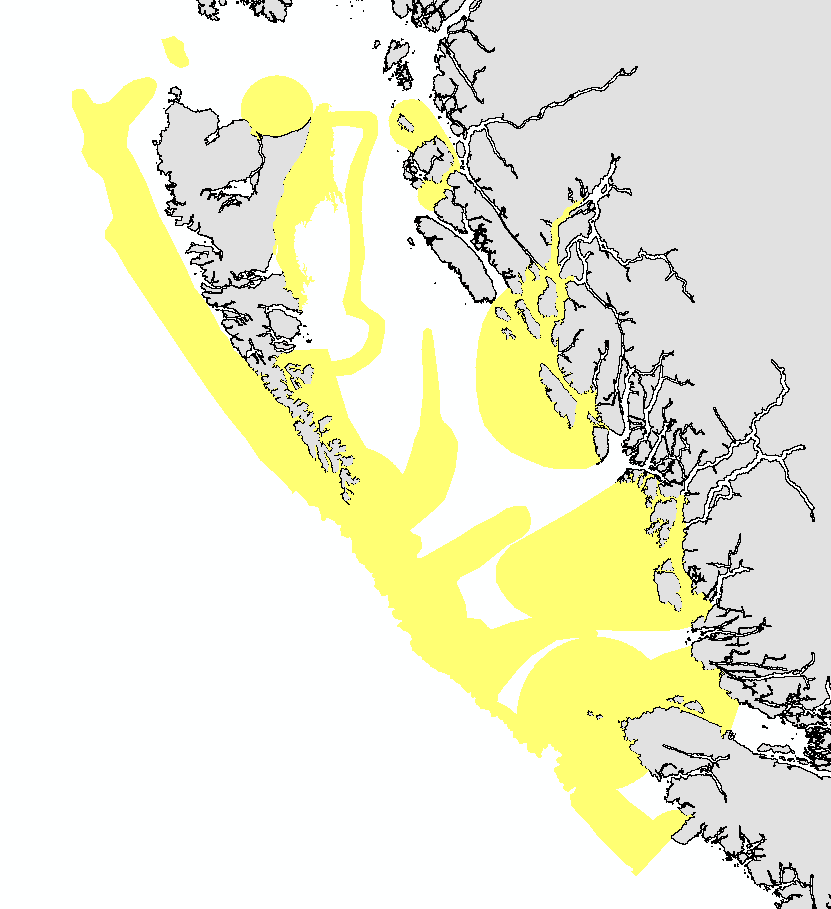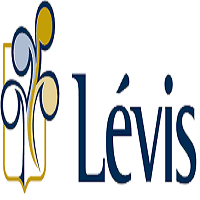RI_542
Type of resources
Available actions
Topics
Keywords
Contact for the resource
Provided by
Formats
Representation types
Update frequencies
status
Scale
Resolution
-

Spiny dogfish (Squlaus acanthias), is a species found in Atlantic Canadian waters which is encountered mostly in commercial fisheries. Pop-up Satellite Archival Tags (PSAT) from Wildlife Computers were applied to spiny dogfish from 2008 to 2009 to collect data on depth (pressure), temperature and ambient light level (for position estimation). Deployments were conducted in Canada on commercial fishing vessels from August to October. Wildlife Computers PSAT Mk10 (N=6) were used and 3 of 6 tags reported. One tag was found washed up on shore and was returned. The spiny dogfish tagged ranged in size from 80 cm to 96 cm Fork Length (curved); all 6 were female. Time at liberty ranged from 75 – 234 days and the 43 tags that reported remained on the sharks for the programmed duration. Raw data transmitted from the PSAT’s after release was processed through Wildlife Computers software (GPE3) to get summary files, assuming a maximum swimming speed of 2m/s, NOAA OI SST V2 High Resolution data set for SST reference and ETOPO1-Bedrock dataset for bathymetry reference. The maximum likelihood position estimates are available in .csv and .kmz format and depth and temperature profiles are also in .csv format. Other tag outputs as well as metadata from the deployments can be obtained upon request from: warren.joyce@dfo-mpo.gc.ca or heather.bowlby@dfo-mpo.gc.ca.
-

The National Ecological Framework for Canada's "Permafrost by Ecoregion” dataset contains tables that provide permafrost information within the ecoregion framework polygon. It provides permafrost codes and their English and French language descriptions as well as information about the percentage of the polygon that the component occupies. Permafrost is defined as a state of the ground, whether soil or rock, that remains at or below a temperature of 0° C for long periods (NRC, Permafrost Subcommittee, 1988). The minimum period is from one winter, through the following summer, and into the next winter; however, most permafrost has existed for much longer. This formal definition considers only the temperature of the ground, and thus permafrost is a strictly thermal phenomenon, and not a material. At temperatures below 0° C , almost all of the soil moisture occurs in the form of ground ice. Ground ice usually exists at temperature close to its melting point and so is liable to melt if the ground warms. The extent and nature of permafrost, including estimated ice content and typical ground ice forms are derived from the map "Canada - Permafrost" (Natural Resources Canada, 1995).
-

Effective conservation planning relies on understanding population connectivity which can be informed by genomic data. This is particularly important for sessile species like the horse mussel (Modiolus modiolus), a key habitat-forming species and conservation priority in Atlantic Canada), yet little genomic information is available to describe horse mussel connectivity patterns. We used more than 8000 restriction-site associated DNA sequencing-derived single nucleotide polymorphisms and a panel of 8 microsatellites to examine genomic connectivity among horse mussel populations in the Bay of Fundy, along the Scotian Shelf, and in the broader northwestern Atlantic extending to Newfoundland. Despite phenotypic differences between sampling locations, we found an overall lack of genetic diversity and population structure in horse mussels in the Northwest Atlantic Ocean. All sampled locations had low heterozygosity, very low FST, elevated inbreeding coefficients, and deviated from Hardy-Weinberg Equilibrium, highlighting generally low genetic diversity across all metrics. Principal components analysis, Admixture analysis, pairwise FST calculations, and analysis of outlier loci (potentially under selection) all showed no independent genomic clusters within the data, and an analysis of molecular variance showed that less than 1% of the variation within the SNP dataset was found between sampling locations. Our results suggest that connectivity is high among horse mussel populations in the Northwest Atlantic, and coupled with large effective population sizes, this has resulted in minimal genomic divergence across the region. These results can inform conservation design considerations in the Bay of Fundy and support further integration into the broader regional conservation network. Cite this data as: Van Wyngaarden, Mallory et al. (2024). Widespread genetic similarity between Northwest Atlantic populations of the horse mussel, Modiolus modiolus. Published: May 2025. Coastal Ecosystem Science Division, Maritimes Region, Fisheries and Oceans Canada, Dartmouth, NS.
-

Contour Lines for the Pasqua, Crooked, Echo, and Round Lakes within the Qu’Appelle Valley river system in Saskatchewan
-

The National Ecological Framework for Canada's "Total Land and Water Area by Ecoprovince” dataset provides land and water area values for ecoprovince framework polygons, in hectares. It includes attributes for a polygon’s total area, land-only area and large water body area.
-

This layer details Important Areas (IAs) relevant to important geographic features in the Pacific North Coast Integrated Management Area (PNCIMA). This data was mapped to inform the selection of marine Ecologically and Biologically Significant Areas (EBSA). Experts have indicated that these areas are relevant based upon their high ranking in one or more of three criteria (Uniqueness, Aggregation, and Fitness Consequences). The distribution of IAs within ecoregions is used in the designation of EBSAs. Canada’s Oceans Act provides the legislative framework for an integrated ecosystem approach to management in Canadian oceans, particularly in areas considered ecologically or biologically significant. DFO has developed general guidance for the identification of ecologically or biologically significant areas. The criteria for defining such areas include uniqueness, aggregation, fitness consequences, resilience, and naturalness. This science advisory process identifies proposed EBSAs in Canadian Pacific marine waters, specifically in the Strait of Georgia (SOG), along the west coast of Vancouver Island (WCVI, southern shelf ecoregion), and in the Pacific North Coast Integrated Management Area (PNCIMA, northern shelf ecoregion). Initial assessment of IA's in PNCIMA was carried out in September 2004 to March 2005 with spatial data collection coordinated by Cathryn Clarke. Subsequent efforts in WCVI and SOG were conducted in 2009, and may have used different scientific advisors, temporal extents, data, and assessment methods. WCVI and SOG IA assessment in some cases revisits data collected for PNCIMA, but should be treated as a separate effort. Other datasets in this series detail IAs for birds, cetaceans, coral and sponges, fish, invertebrates, and other vertebrates. Though data collection is considered complete, the emergence of significant new data may merit revisiting of IA's on a case by case basis.
-

Level curves on the territory of Lévis. The equidistance is 50 cm, produced from a LiDAR survey carried out in May 2017.**This third party metadata element was translated using an automated translation tool (Amazon Translate).**
-

Note: To visualize the data in the viewer, zoom into the area of interest. The National Air Photo Library (NAPL) of Natural Resources Canada archives over 6 million aerial photographs covering all of Canada, some of which date back to the 1920s. This collection includes Time Series of aerial orthophoto mosaics over a selection of major cities or targeted areas that allow the observation of various changes that occur over time in those selected regions. These mosaics are disseminated through the Data Cube Platform implemented by NRCan using geospatial big data management technologies. These technologies enable the rapid and efficient visualization of high-resolution geospatial data and allow for the rapid generation of dynamically derived products. The data is available as Cloud Optimized GeoTIFF (COG) for direct access and as Web Map Services (WMS) or Web Coverage Services (WCS) with a temporal dimension for consumption in Web or GIS applications. The NAPL mosaics are made from the best spatial resolution available for each time period, which means that the orthophotos composing a NAPL Time Series are not necessarily coregistrated. For this dataset, the spatial resolutions are: 75 cm for the year 1960 and 50 cm for the year 1974. The NAPL indexes and stores federal aerial photography for Canada, and maintains a comprehensive historical archive and public reference centre. The Earth Observation Data Management System (EODMS) online application allows clients to search and retrieve metadata for over 3 million out of 6 million air photos. The EODMS online application enables public and government users to search and order raw Government of Canada Earth Observation images and archived product managed by NRCan such as aerial photos and satellite imagery. To access air photos, you can visit the EODMS web site: https://eodms-sgdot.nrcan-rncan.gc.ca/index-en.html
-

The National Ecological Framework for Canada's "Surface Form by Ecozone" dataset contains tables that provide surface form information for components within the ecozone framework polygon. It provides surface form codes and their English and French-language descriptions as well as information about the percentage of the polygon that the component occupies. Surface form descriptions describe assemblages of slopes or recurring patterns of forms that occur at the earth's surface. When applied to consolidated materials (material that has been transformed to hard rock), it refers to the form produced after modification by geological processes. The mineral soil surface forms are: dissected; hummocky (irregular); inclined; level, rolling; ridged; steep; terraced; undulating. The wetland surface forms are: bog; fen; marsh; swamp.
-

The Population of Canada, 10km Gridded national scale datasets display the distribution and areal extent of rural, urban and total populations across Canada for both 2011 and 2016. The 10km gridded framework is the same 10km gridded framework used within the Biomass Inventory Mapping and Analysis Tool. This data was created for AAFC by Statistics Canada using AAFC’s 10km gridded framework. The purpose of this data is to display the distribution of rural and urban populations across a 10km x 10km grid of Canada.
 Arctic SDI catalogue
Arctic SDI catalogue